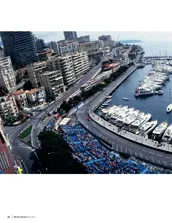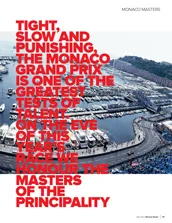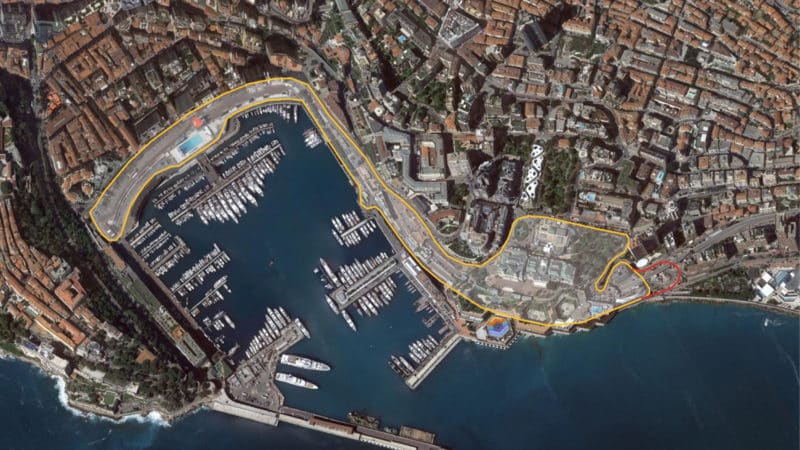“Focus is the key. If you can keep the concentration for each corner, each lap, you won’t make a mistake,” said Valtteri Bottas ahead of the 2023 race. “It’s a lot about precision,” added Pierre Gasly. “It’s all about being very precise with your lines, being millimetres away from the rails everywhere, really nailing the braking points. This sort of risk that brings more adrenaline to it.”
This year will attempt to deliver more excitement out of the cockpit as well, with two pitstops per car being made mandatory for Monaco. The idea is to increase the chances of different strategic approaches so there is a chance for drivers to pass cars ahead — even if it is just in the pits. But are there better options, such as adapting the circuit to make the racing as compelling as qualifying?
We’ve looked at some proposals below — initial ideas that aren’t always as simple as they might appear, particularly in Monaco where shutting off streets creates significant disruption, and where run-off areas are hard to come by.
Remove the Nouvelle Chicane
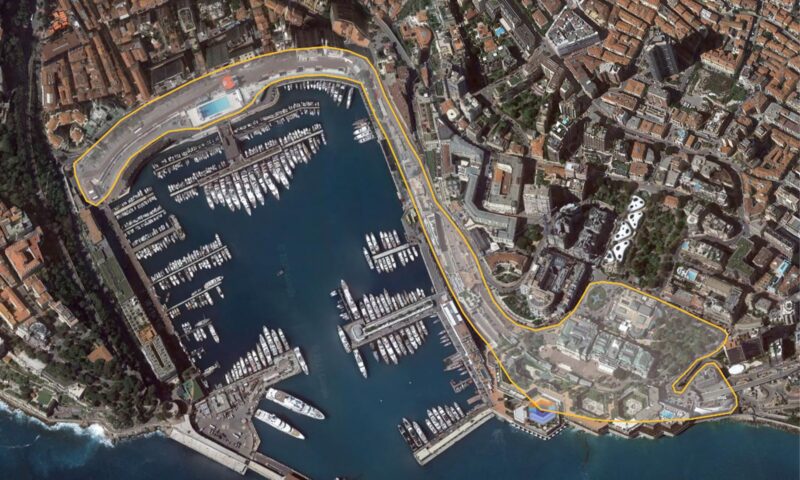
Monaco Track Map with Nouvelle Chicane removed
A single DRS zone appearing on the main straight is perhaps the centre of Monaco’s overtaking problem. In an era where F1 cars struggle to follow one another, drivers rely on multiple DRS zones in order to aid overtaking. Monaco has very little room for designers to fulfil this need, but it’s not impossible.
By removing the Nouvelle Chicane and adding a DRS zone ahead of the Tunnel, organisers could effectively create a second straight on which F1 drivers could pass. However, they would still need to be slowed before entering the unforgiving harbour complex at Tabac, which is where the proposal requires investment.
The Nouvelle chicane sits on a concrete pad that extends into the harbour and a similar structure would have to be created at vast expense just ahead of the Tabac left-hander. With some rearrangement of tree planters, cars would then be able to run down Avenue JF Kennedy, which is currently now the escape road. Just before the road angles upwards and away from the harbour, the cars would swing left into a new chicane onto the new concrete pad and then towards Tabac.
The uphill road would act as the new run-off. To give some indication of Monaco’s challenge. This is perhaps its most realistic option.
Surpassing Portier
Organisers could extend the high-speed tunnel section at the other end too, by including a tight left-hand turn on the exit of Mirabeau Bas and sending cars around a long hairpin that exits at Portier.
In all likelihood, this short extra stretch of asphalt would have minimal impact, so the Nouvelle Chicane would also have to be removed.
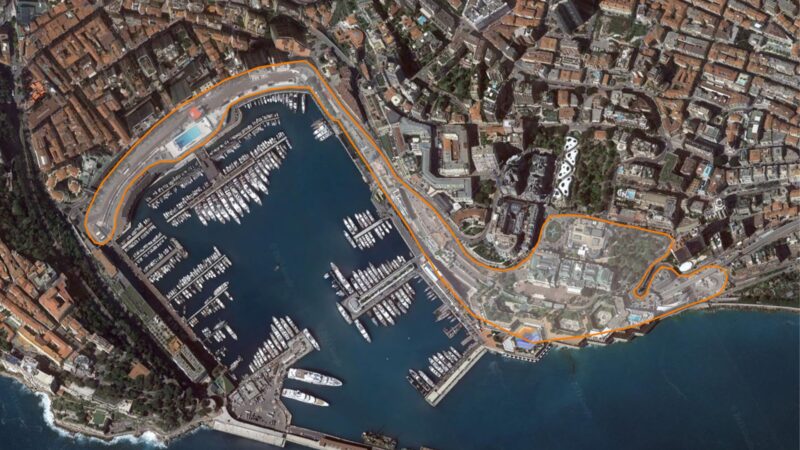
Monaco track map which surpasses Portier and removes the Nouvelle Chicane
Extended circuit and additional DRS zones
With the current circuit remaining almost identical to its original layout, designers could also expand its footprint in order to add in extra overtaking opportunities. This example removes La Rascasse and instead diverts cars along the other side of the harbour, wrapping around the dock and back up the hill toward Anthony Noghès before rejoining the home straight.
This would allow for at least one extra DRS zone, but require more than just closing a stretch of roads. The carriageways here are too narrow for racing, and would need extensive widening, while also disrupting working areas of the harbour, including the cruise ship dock, maritime police office — to say nothing of the Monaco Yacht Club.
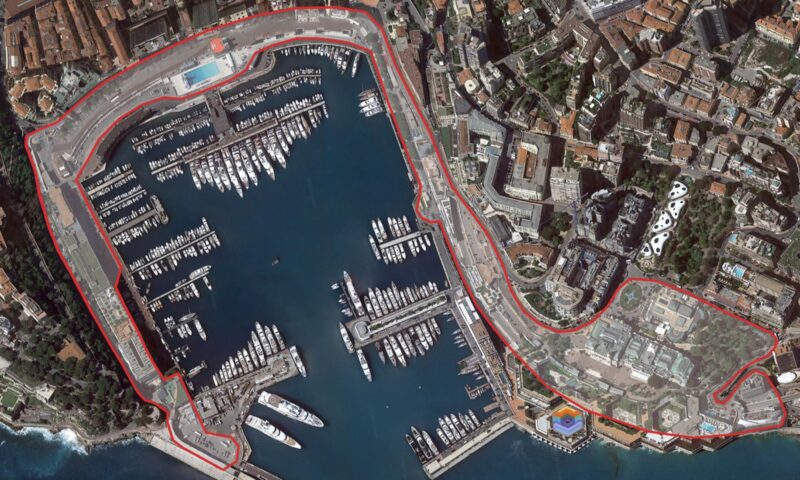
Monaco track map with an extended third sector and extra DRS zone
Monaco XXL
Extending the Monaco circuit could be taken drastically further by visiting other areas of Monte Carlo. This example would divert the field away from Casino Square and weave toward a straight which could house a second DRS zone. Cars would then dive back down toward the original circuit, rejoining shortly before Mirabeau Haute.
This would certainly introduce a new challenge for the drivers, but would force organisers to spend more time developing and preparing the circuit ahead of an F1 grand prix.
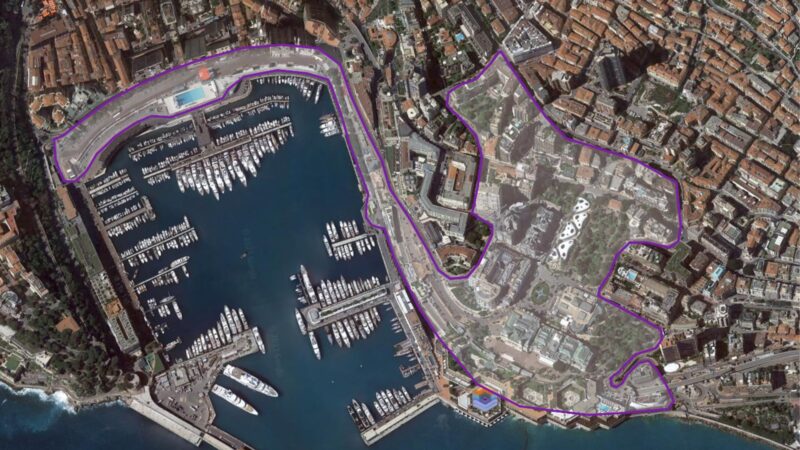
Monaco track map, forcing cars to drive deeper into the smaller Monte Carlo streets
Monaco GP format changes
F1 remains keen to test format changes to make race weekends more entertaining and sprint races have shown that they don’t need to apply to every Grand Prix weekend. Could the simplest solution be to devise a Monaco-specific race weekend, that goes beyond the new pitstop rule?
Joker laps
For those unfamiliar with World Rallycross, joker laps add another strategical dimension to motor racing. They use a longer section of track, in addition to the complete circuit, that is slower or harder to navigate. Drivers have to take this extra loop a certain number of times during the race and get to decide the lap(s) that they do so.


